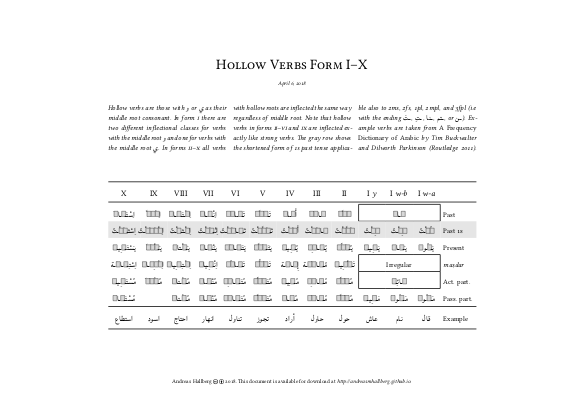Hollow and defective verbs
Update 2024-01-29 — Modified presentation of hollow I 1s past.
Update 2023-12-28 — Corrected defective present tense IV and II.
Update 2023-10-26 — Sligth editing.
Update 2019-02-06 — Reformulation in text. Fatha added before alif maqṣūra.
updates
This is a followup to a previous post in which I presented a way of representing the ten Arabic verb forms. In the document below I have done the same thing as in that post, i.e., a table with the ten verb forms in present, past, etc. with the roots represented by empty squares, but this time for hollow and defective verbs. This is essentially two separate documents, one for hollow verbs and one for defective verbs, conveniently packaged in one pdf.
Hollow verbs are those that have و or ي as their middle root and defective verbs are those that have و or ي as their final root. Their inflection deviates from that of the strong verb but is regular, only with different and more complex regularities. These verbs are in some teaching materials presented as “irregular” verbs and students are then encouraged to study them as such, one by one. While there is some merit to this, I believe it is useful, at least for some students, to see the whole system laid out as a whole in one massive table. This way they can discover patterns and regularities and develop a feel for how the roots و or ي behave in various morphological contexts.

